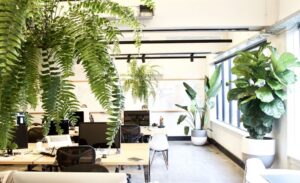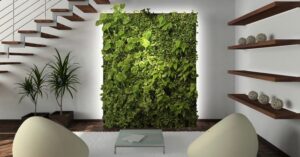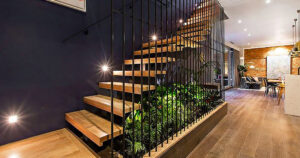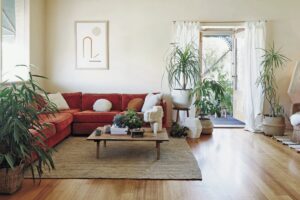Why We Should Make Our Home Green
The ‘living’ decor plants are an inexpensive way to add instant color and glamour to home interior.
1. Plants Improve Quality of Living
Influential colour forecaster Pantone might have moved on from Greenery, its 2017 colour of the year, to 2018’s Ultra Violet, but green – as in, living plant life – is still trending, and designers see it as one of the big interiors stories of the year.
There’s more than aesthetics to this look: plants are believed to be good for health, and help clean the indoor air. So, “living” decor marries well with an even bigger overarching trend – wellness – which designer Rowena Gonzales, founder of Liquid Interiors, sees as something for which homeowners are willing to pay a premium.
On that score, though, plants are luxury interiors’ thrifty cousin. You can shop locally from flower markets, or even harvest from the roadside. Pop into lovely pots to add glam to the greenery, and you have a relatively inexpensive way to decorate, and hopefully clear the air of toxins at the same time.
There are those who consider themselves to be “a house plant kind of person” – and others who are not. However, we should all be filling our homes to the brim with plants. Introducing plants into our homes is one of the ways we can easily and practically counteract the negative effects of city living.
Indoor plants can improve air quality by creating oxygen and absorbing carbon dioxide, regulating humidity, and absorbing harmful chemicals such as formaldehyde and volatile organic compounds, she continues.
2. Plants Make People be More Creative and Productive

Another benefit of being around plants is that they’re believed to make people more creative and productive; reduce stress and give us overall higher levels of well-being.
Having decided to enhance your living or workspace with plants, the most important thing is to have fun with it, says Gonzales. See your plants as a form of art to be placed as vignettes on shelves, in corners, and spaces where there are natural gaps, she advises.
3. Plants Make Walls More Interesting

Hanging plants from the ceiling is another great way to display them, creating a focus at different heights to make the room more interesting. Air plants in oversized glass baubles work a treat in this way.
Mix it up: layer plants in tall, medium and small sizes, and vary from a single, sculptural statement plant to a cluster arrangement. Odd-numbered groups of three, five or seven work better than even numbers. “Even numbers create symmetry; off numbers create interest,” she explains.
Green, or living, walls are crossing over from corporate environments to residential spaces, and work well in smaller spaces where there isn’t room for pots. Just choose wisely, as some plants do need outdoor elements to survive.
The exceptions include Polarmoss, a lichen growing wild in Finland – and sold in Hong Kong as living indoor artwork at Wah King Garden Arts in Sai Kung – which can thrive indoors with minimal intervention.
4. Plant Pots are Like a Peace of Furniture

At the workstation table in the Liquid Interiors office, Gonzales maintains a formula of one large plant between every four people, and a variety of plants throughout are used as both artwork and decor. At your green home, each plant pot is selected like furniture to match the room it is in.
“I find that ivy and jade plants grow well in bathrooms, where there is not much daylight,” she said. “In the bedroom, lavender in a large pot brings in a subtle fragrance to relax at night.” In the living room, interest is created with a Swiss cheese plant and jade plant in an elevated pot, and on the dining table, plants swim in a water vase with fish inside. Gonzales advises that succulents are similarly easy to maintain. Their diminutive size won’t dominate, and their sculptural form suits a minimalist decor.
Website: www.scmp.com
